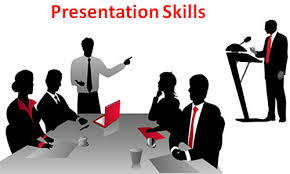 Some presentations don’t impress because key components are missing. Much more neglect because they contain too much information. Information overload is ever present in our contemporary society. The presentation that impresses with a strong message is the one which is sharp and focused on its own aim. So, the way to be sure your presentation doesn’t fall into the trap of providing your audience more information just because you can. What is it precisely that you want your audience to understand not just know at the end of your presentation? Can you explain this aim in 1 sentence? If you are able to write it down. If you can’t then work at it until you can. If it will not fit into a sensible sentence, then you have more than one goal and need more than one presentation. Keep this aim in mind. Build out from the aim, use mind-mapping or other planning aids if you are comfortable with them. Immediately around the aim are clustered facts and figures that are essential. Check out the below mentioned site, if you’re searching for more details regarding presentation course.
Some presentations don’t impress because key components are missing. Much more neglect because they contain too much information. Information overload is ever present in our contemporary society. The presentation that impresses with a strong message is the one which is sharp and focused on its own aim. So, the way to be sure your presentation doesn’t fall into the trap of providing your audience more information just because you can. What is it precisely that you want your audience to understand not just know at the end of your presentation? Can you explain this aim in 1 sentence? If you are able to write it down. If you can’t then work at it until you can. If it will not fit into a sensible sentence, then you have more than one goal and need more than one presentation. Keep this aim in mind. Build out from the aim, use mind-mapping or other planning aids if you are comfortable with them. Immediately around the aim are clustered facts and figures that are essential. Check out the below mentioned site, if you’re searching for more details regarding presentation course.
Further out there is supporting information that’s important. As you get further away from the significance and the relevance drops off sharply. Be ruthless and eliminate everything that doesn’t construct a picture of your aim in the mind of your audience. Note down all of the information, illustrations and arguments; whatever you need. If you’re not certain in the early stages whether you will need a particular item, leave it in. But have the guts to throw it out later if it’s not needed. One check question is, ‘would my audience feel cheated if they found out about this later?’ In that case, leave it in. You are not hiding things from your audience; just doing them the courtesy of their having to listen to only what is necessary. Don’t fall into the trap of filling a thirty-minute slot just because you have been given that time.
If you want less, say so. You will probably be thanked, especially if there is a busy programme. Needless to say, if you want more, ask. Never, ever, over-run your time. Few of us are good enough speakers for our audiences to want more than they asked for. Do you understand the difference between an example and an anecdote; humour and jokes; friendliness and obsequiousness? For our purposes, the distinction is what you leave in and what you discard. Do use examples if required; do not ramble off into irrelevant tales. Do be somewhat humorous if appropriate; don’t tell jokes, especially smutty ones. Do be as open and friendly as the occasion allows; do not try to suck up to your audience. If you adhere to these rules, your presentation will be sharp and lean. The lines you draw from your arguments to your conclusions will be evident. Your audience will understand precisely what you wanted them to understand with no distracting thoughts. Your chances of achieving your aim will be a lot higher. And if sometimes you do fail, at least you’ll know it was because you didn’t convince them, not because you lost them on the way.